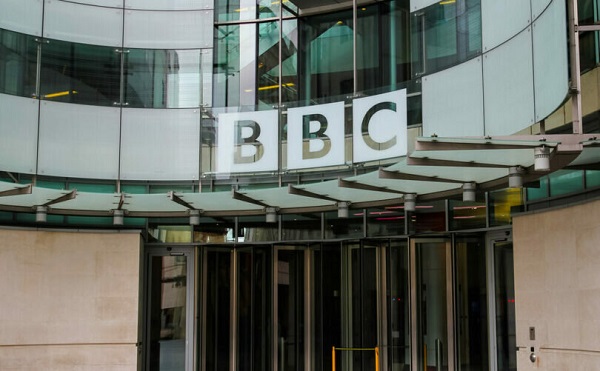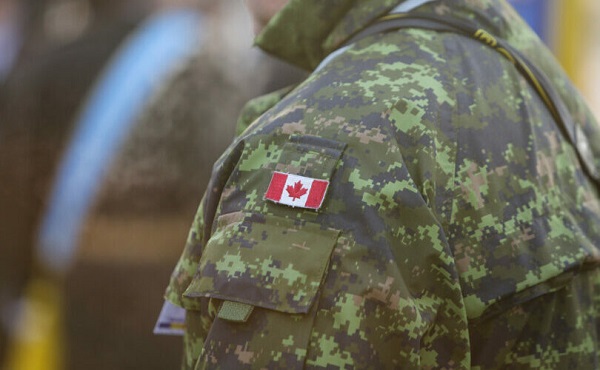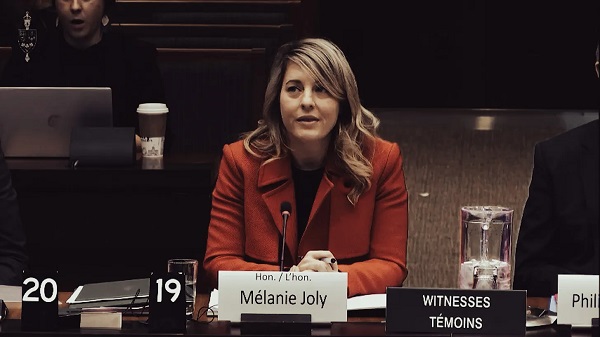Opinion
It’s payback time as culture war cops switch sides, moral confusion reigns and revenge gets ready to rumble

Just as with Newton’s third law of physics, every political action provokes an equal and opposite reaction.
This is the problem with encouraging cancel culture and the suppression of free expression. Sooner or later, you’re the rednecked mother who’s up against the wall. Keeping in mind that freedom comes with responsibilities, deploying political morality hit squads was a bad idea then and it’s a bad idea now.
Help The Rewrite hold media to account by becoming a free or paid subscriber.
In Canada in recent years, it has been those on the liberal-left side of the ledger who have been pushing illiberal ideas in the form of removal of statues, compelled speech (pronouns), controlled speech (Online Harms Act), regulation of content (Online Streaming Act) and through professional bodies. Examples there include the prosecution of Jordan Peterson by the Ontario College of Psychologists, Amy Hamm by the B.C. College of Nurses and Midwives, the drive to ensure Trinity Western University could not launch a law school and Francis Widdowson’s sacking as a tenured professor at Mount Royal University. Oh, and who can forget the furore, newsroom uprising and National Post apologia when Rex Murphy wrote a column insisting most Canadians are not actually racists.
You may believe these acts to be justified but there is little doubt concerning the intellectual inspiration behind them. It comes from the Liberal-Left where people decided there must be rules to deal with other people they believe hold disagreeable opinions or say unsavoury things. Former prime minister and media darling Justin Trudeau put it down to “fringe” minorities with “unacceptable views” while Jonny Ball, writing in Unherd, has this explanation:
“It is an unfortunate and common misconception among progressives that those who disagree with them must have been bamboozled, or else they must have some illegitimate self-interest which has led them to maintain a position which is not simply a different interpretation or view of the world, but a fundamentally immoral one.”
South of the border, it was only a couple of years ago when the corporate world was embracing woke ideology by changing sports teams’ names and using trans TikTokers to sell beer. It is now guarding its shareholders interests by, for instance, swiftly suspending late night talk show host Jimmy Kimmel indefinitely for making what FCC Chair Brendan Carr deemed inappropriate remarks in the wake of the assassination of Charlie Kirk.
Washington Post editor Karen Attiah was fired for what she insists were comments consistent with her role as a journalist. US President Donald Trump, cheered on by many on the right (but certainly not Ted Cruz) threatened the broadcast licenses of US networks, vowed to designate Antifa as a terrorist organization (there’s a case for that) and target the “radical left.”
And now, those media who stayed silent, complied or cheered while one side trampled on the rights of another and folks like Don Cherry were given the bum’s rush are in full OMG! OMG! Fascism! voice. All you have to do is read the Twitter stream of the Toronto Star’s Bruce Arthur and you’ll see what I mean.
This is the problem with encouraging cancel culture and the suppression of free expression. Sooner or later, you’re the rednecked mother who’s up against the wall. Keeping in mind that freedom comes with responsibilities, deploying political morality hit squads was a bad idea then and it’s a bad idea now.
Canadian media follow American politics and news pretty closely so I was surprised (OK, I wasn’t really) they didn’t pick up on a particularly prescient bit of news about attitudes in the USA.
An overwhelming majority – 72 per cent – agreed violence can never be justified against a political opponent. Good. But among those who approve of it, people who lean left are far more inclined to want to kick other people’s teeth in, according to the poll.
As TheHill.com put it, “The Sept. 10 poll shows the more liberal respondents were, the more likely they were to say violence can sometimes be justified.
“A quarter of respondents who identified as “very liberal” said violence can sometimes be justified to achieve political goals, along with 17 percent of those who identified as “liberal,” 9 percent of moderates, 6 percent of those who said they’re “conservative” and 3 percent of those who identified as “very conservative.”
Meanwhile, oblivious to any threats from the Left, the Canadian Anti-hate Network – a “proudly independent antifascist” body is hiring a full time reporter to focus exclusively on right wing extremists. The job was posted the day after Charlie Kirk was slain.
While there was a lot of justifiable fuss over Trump’s bullying of TV networks, there were no eyebrows raised when Identity and Culture Minister Steven Guilbeault made it clear his government is willing to hold CBC accountable for journalism standards.
Keep in mind that in the past the CBC has vigorously defended the independence of its newsrooms, its president insisting neither she nor its board could interfere in its conduct. Guilbeault’s statement following the suspension of reporter Elisa Serret for going on an antisemitic rant, seems to indicate he sees a role for government as a CBC watchdog.
“CBC/Radio Canada belongs to all Canadians and, as leaders, we have a responsibility to hold it to account and demand the highest standards of journalism,” he said, noting, for context, that the government should never interfere in programming decisions.
But those are not journalism standards. A small crack, perhaps, or maybe a chip in the windshield worth watching.
One of the first things young journalists are taught is how to rewrite a press release and not get sucked into using the terminology preferred by its corporate or political authors.
Sadly, it appears Canadian Press has abandoned that approach, preferring in its report on the federal government’s creation of a new housing agency to use Prime Minister Mark Carney’s language and refer to $13 billion in deficit spending as “investment.” The “Carney government launches ‘Build Canada Homes’ with $13B initial investment” headline appeared across the country. This is a betrayal of sound journalism practices that will only further diminish the public’s trust in establishment media.
The role of journalists is to make sure the public hears the truth, which means challenging statements, particularly those that are unsourced. The CBC’s Rosemary Barton did not do that when interviewing Government House Leader Stephen MacKinnon on her program.
Mackinnon explained that he had spoken with a number of Conservative MPs who told him that they were under pressure from their constituents to cooperate with the government and take it easy with that Opposition thing. Rather than challenging and asking for names of the MPs, the source of the constituent pressure (Liberals, CPC, NDP members, etc) or any proof whatsoever to support MacKinnon’s claim, Barton just let it slide.
Condolences to the dozens of Global News reporters who were let go in Corus’s latest round of cuts. Not much left in its newsrooms in the West.
Two bouquets this week, one to the New York Times for launching a newsletter – Believing – dedicated to the coverage of religion, a topic of immense importance to many people that most publishers abandoned years ago. And an even bigger floral arrangement goes to independent old time reporter Bob Mackin for being – to the best of my knowledge – the only journalist to correct the government’s very truthy claim that it had “cancelled” the consumer Carbon Tax. As Mackin smartly noted, “The tax law was not repealed. Only the tax reduced to zero. The law is still there and the tax could make a comeback someday.”
There may still be a heartbeat. For more on media bias regarding targeting the “far right” while ignoring the “far left” see my column Tuesday in The Hub.
(Peter Menzies is a commentator and consultant on media, Macdonald-Laurier Institute Senior Fellow, a past publisher of the Calgary Herald, a former vice chair of the CRTC and a National Newspaper Award winner.)
Help The Rewrite hold media to account by becoming a free or paid subscriber.
Business
Carney’s Floor-Crossing Campaign. A Media-Staged Bid for Majority Rule That Erodes Democracy While Beijing Hovers

In a majority government, an unprecedented and risky, course-altering national policy — deepening ties with Beijing while loosening ties with Washington — is considerably easier to execute.
On budget day, Ottawa’s reporters were sequestered in the traditional lock-up, combing through hundreds of pages, when Politico detonated a perfectly timed scoop: Conservative MP Chris d’Entremont was weighing a jump to Mark Carney’s Liberals. Within hours, he crossed, moving the government to within two seats of a majority — one that would guarantee Carney’s hold on power until 2029 — without Canadians casting a single ballot.
This was no ordinary budget day. By orchestrating a floor-crossing during a media lock-up, the Liberals blurred scrutiny of a historic spending plan while inching toward a de facto majority. That sequence raises deeper concerns about media–political entanglements and the democratic legitimacy of building a majority outside the polls.
Toronto Sun columnist Brian Lilley, in a deeply reported Substack post yesterday, captured months of palace intrigue. A well-sourced politics reporter with lines into Conservatives and Liberals alike, he lays out the knowns, the known unknowns, and the plausible backroom plays. Carney’s courting began right after the April 28 election that left him sitting at 169 seats, Lilley writes. For weeks, the Liberals probed for weak ribs in the Conservative caucus; and on November 4, they landed one.
“One thing is clear, the Liberals have been trying to poach a lot of Conservative MPs and doing everything they can to convince them to cross the floor,” he concluded.
Why? According to Lilley, Carney has been “governing for the most part like he has a majority, and he clearly doesn’t want to engage in the horse trading that a minority Parliament requires, so poaching MPs can solve his problem.”
The fallout was already clear to see last week. And it doesn’t look good for Canadian democracy or Canadian media, which receives significant government subsidies. Even at surface level, the press corps was visibly distracted from its first duty to citizens: scrutinizing a historically large budget packed with nation-building promises and unanswered questions about feasibility. Veteran reporters have already acknowledged this.
In another piece this weekend, Catherine Tunney, a solid CBC reporter, explained how Pierre Poilievre was undermined this way: “For the Opposition, budget week is a communications gift. It’s an easy way for the party to call out government spending,” she wrote. “For a leader who has built his brand on calling out Liberal spending, tabling a budget with a $78-billion deficit is the political equivalent of pitching a strike straight down the middle to Dodger slugger Shohei Ohtani.”
But instead, “of taking a victory lap around the bases, [Poilievre] ended the week facing questions about his leadership — after losing one MP to his rivals and another resigning from federal politics altogether.”
The messaging continued yesterday, with another CBC report amplifying the Liberals’ narrative that Conservative leaders were actively bullying MPs not to cross.
CBC had to issue a correction. After publishing d’Entremont’s account that senior Conservatives “pushed” his assistant, CBC later updated the story to clarify that Andrew Scheer and Chris Warkentin “pushed open the door,” and the aide stepped aside — a meaningful distinction.
Stepping back from the noise, there is a deeper problem.
Making honeyed promises to floor-crossers is legal in Canada’s democracy. But Canada is in a mounting trade war involving China and the United States, in an increasingly dangerous, cutthroat geopolitical environment. Already, the prime minister is pledging renewed engagement with Beijing as a strategic partner.
Doing so in a minority Parliament means facing tough accountability questions — and bruising inquiries in ethics committee hearings. In a majority government, an unprecedented and risky, course-altering national policy — deepening ties with Beijing while loosening ties with Washington — is considerably easier to execute.
And what kind of partner is Carney choosing? Yesterday, Japan lodged formal complaints after a senior Chinese diplomat took to social media and threatened to “cut [the] dirty neck” of Japan’s new leader over her stance on Taiwan. On Friday, Prime Minister Sanae Takaichi had said a Chinese attack on Taiwan could constitute “a survival-threatening situation” for Japan, potentially requiring the use of force.
“We have no choice but cut off that dirty neck that has been lunged at us without hesitation. Are you ready?” Chinese Consul General Xue Jian said in a message posted on X, which was later deleted.
This is the government Carney is rapidly sliding closer to. The same regime that jailed Canadians Michael Kovrig and Michael Spavor in the Meng Wanzhou affair — and a government that, Canadian intelligence has warned, attempts to shape media narratives in Canada.
As The Bureau reported in 2023, Canada’s own Privy Council Office warned in a January 2022 Special Report that Beijing’s United Front Work Department targets Canadian institutions.
In a section alleging Beijing “manipulates traditional media” in Canada, the report details press conferences held in January 2019 by former Toronto-area Liberal cabinet minister John McCallum, to argue that Canada’s detention of Huawei executive Meng Wanzhou was illegal. McCallum, then ambassador to China, was forced to resign after the Conservative opposition condemned his comments.
In the fallout, according to the Privy Council Office report, Canadian intelligence uncovered that several Chinese diplomats in Canada were voicing support for McCallum. One Chinese consulate official “sent information” to an unidentified Canadian media reporter indicating Chinese Canadians have favourable impressions of McCallum, the report says.
Now back to Ottawa media’s role. Why and how did Politico get the floor-crossing scoop during the budget lock-up — and then, that same evening, co-host a post-budget reception branded “Prudence & Prosecco” at the Métropolitain Brasserie, where Finance Minister François-Philippe Champagne and well-placed Liberals mingled with reporters? Every veteran reporter knows political parties try to influence the press — they’re called spin doctors for a reason. But darker forces can ride the same channels. In Brussels, for example, European security services are investigating a former Politico reporter over alleged ties to Chinese intelligence — still unproven, but a cautionary tale about the murkiness of media–political ecosystems.
Lilley also documents how coverage of another rumoured floor-crosser, Matt Jeneroux, became part of last week’s fog machine. The Toronto Star reported a private meeting between Jeneroux and Carney involving senior Liberal strategists Braden Caley and Tom Pitfield; Jeneroux issued categorical denials to senior Conservatives. “Someone is lying,” Lilley writes — and whether or not a second crossing was imminent, the destabilization served its purpose. Other names floated, such as Michael Chong, were so implausible as to raise suspicion of calculated disinformation.
“I didn’t buy Chong either, but Liberals kept pushing that narrative,” Lilley wrote. “As someone who knows Michael a bit, I simply didn’t believe it, didn’t even reach out to ask — he later called me to confirm the rumours were bogus.”
It is geopolitically notable that Michael Chong — sanctioned by Beijing and repeatedly targeted in PRC pressure campaigns, including a Chinese intelligence operation targeting Chong and his family that Justin Trudeau’s government failed to notify him about — saw his name tossed into this mess. Who benefits from saddling Chong with corrosive rumours?
It would seem that not only the Liberals benefit, but so do Carney’s new “strategic partners” in Beijing. None of this proves any newsroom has wittingly acted in bad faith, nor is there any evidence that Beijing’s shadow looms in the Liberals’ media playbook. But it does suggest how a coordinated political operation can be abetted by domestic media distraction.
Now, consider darker possibilities that could be in play. Not necessarily last week, but in any number of major events and stories shaping relations among Canada, China, and the United States.
The bipartisan NSICOP 2024 Review into allegations of Chinese election interference in Canada’s last two federal elections found that “during the period under review, the intelligence community observed states manipulating traditional media to disseminate propaganda in what otherwise appeared to be independent news publications.”
It added: “Foreign states also spread disinformation to promote their agendas and consequently challenge Canadian interests, which posed the greatest cyber-threat activity to voters during the time under review.”
The report continued: “These tactics attempt to influence public discourse and policymakers’ choices, compromise the reputations of politicians, delegitimize democracy, or exacerbate existing frictions in society.”
According to the intelligence community, “the PRC was the most capable actor in this context, interfering with Canadian media content via direct engagement with Canadian media executives and journalists.”
So what do we have here? Carney’s Liberals have a natural interest in destabilizing the Conservatives and sending Pierre Poilievre — a prosecutorial-style politician who excels at exposing his opponents’ weaknesses — into early political retirement. Arguably, they have a well-founded interest in dividing the Conservative Party itself.
But using the media to float names of opposition MPs who never intended to cross is disinformation, plain and simple. And when that name is Michael Chong — long targeted by Beijing — the stakes rise. If Carney is tilting toward a “strategic partnership” with Beijing, and if that delays the Foreign Influence Transparency Registry, as critics such as Dr. Charles Burton warn, then the tactics on display have moved from questionable to unacceptable — and risk entangling the interests of the Liberal Party of Canada with those of the Chinese Communist Party in Beijing.
The Bureau is a reader-supported publication. To receive new posts and support my work, consider becoming a free or paid subscriber.
Daily Caller
McKinsey outlook for 2025 sharply adjusts prior projections, predicting fossil fuels will dominate well after 2050


From the Daily Caller News Foundation
A new report from McKinsey & Company, the “Global Energy Perspective,” lays bare what many of us – dismissed as “climate deniers” – have been asserting all along: Coal, oil and natural gas will continue to be the dominant sources of global energy well past 2050.
The McKinsey outlook for 2025 sharply adjusts prior projections. Last year, the management consultant’s models had coal demand falling 40% by 2035. Today, McKinsey projects an uptick of 1% over the same period. The dramatic reversal is driven by record commissioning of coal-fired power plants in China, unexpected increases in global electricity use, and the lack of viable alternatives for industries like steel, chemicals and heavy manufacturing.
The report states that the three fossil fuels will still supply up to 55% of global energy in 2050, a forecast that looks low to me. Today’s share for hydrocarbons is about 64%.
Dear Readers:
As a nonprofit, we are dependent on the generosity of our readers.
Please consider making a small donation of any amount here.
Thank you!
In any case, McKinsey’s report confirms what seasoned energy analysts and pragmatic policymakers have long maintained: The energy transition will not be swift, simple, or governed solely by climate targets. In fact, this energy transition will not happen at all without large scale deployment of nuclear, geothermal or other technological innovations that prove practical.
In places such as India, Southeast Asia and sub-Saharan Africa, the top energy priorities are access, affordability and reliability, which together add up to national security. Planners are acutely aware of a trap: Sole reliance on weather-dependent power risks blackouts, industrial disruption, economic decline and civil unrest.
That is why many developing nations are embracing a dual track: continued investment in conventional generation (coal, gas, nuclear) while developing alternative technologies. McKinsey says this in consultancy lingo: “Countries and regions will follow distinct trajectories based on local economic conditions, resource endowment, and the realities facing particular industries.”
In countries like India, Indonesia and Nigeria, the scale of electrification and industrial expansion is enormous. These countries cannot afford to wait decades for perfect solutions. They need “reliable and good enough for now.” That means conventional fuels will be retained.
McKinsey’s analysis also underscores what physics and engineering dictate: Intermittent and weather-dependent sources, such as wind and solar, require vast land areas, backup batteries and generation and power-grid investments, none of which come cheaply nor quickly.
The technologies of wind and solar branded as renewable should instead be called economy killers. They make for expensive and unstable electrical systems that have brought energy-rich nations like Germany to their knees. After spending billions of dollars on unreliable wind turbines and solar panels and demolishing nuclear plants and coal plants, the country is struggling with high prices and economic stagnation.
The Germans now have a word for their self-inflicted crisis: Dunkelflaute. It means “dark doldrums”—a period of cold, sunless, windless days when their “green” grid fails. During a Dunkelflaute in November 2024, fossil fuels were called on to provide 70% of Germany’s electricity.
If “renewables” were truly capable, planners would shut down fossil fuel generation. But that is not the case. While wind and solar are pursued in some places, coal and natural gas remain much sought-after fuels. In the first half of 2025 alone, China commissioned about 21 gigawatts (GW) of new coal-fired capacity, which is more than any other country and the largest increase since 2016.
Further, China has approved construction of 25 GW of new coal plants in the first half of 2025. As of July, China’s mainland has nearly 1,200 coal plants, far outstripping the rest of the world.
McKinsey points to a dramatic surge in electricity demand driven by data centers, which is estimated to be about 17 % annually from 2022 to 2030 in the 38 OECD countries. This kind of growth in electricity use simply cannot be met by wind and solar.
When analysts, journalists and engineers point out these realities, they’re branded as “shills” for the fossil fuel industry. However, it is not public relations to point out the physics and economics that make up the math for meeting the world’s energy needs. Dismissing such facts is to deny that reliable energy remains the bedrock of modern civilization.
The cost of foolish “green” policies is being paid in lost jobs, ruined businesses, disrupted lives and impoverishment that could have been avoided by wiser choices.
For those who have repeated energy realities for years, the vindication is bittersweet. The satisfaction of being right is tempered by the knowledge that many have suffered because reality has been ignored.
Vijay Jayaraj is a Science and Research Associate at the CO2 Coalition, Fairfax, Va. He holds an M.S. in environmental sciences from the University of East Anglia and a postgraduate degree in energy management from Robert Gordon University, both in the U.K., and a bachelor’s in engineering from Anna University, India.
-

 International2 days ago
International2 days agoBBC uses ‘neutrality’ excuse to rebuke newscaster who objected to gender ideology
-

 International2 days ago
International2 days agoLarge US naval presence in Caribbean reveals increased interest in western security
-

 Energy2 days ago
Energy2 days agoThawing the freeze on oil and gas development in Treaty 8 territory
-

 armed forces1 day ago
armed forces1 day agoWhy Do Some Armed Forces Suffer More Suicides Than Others?
-

 Agriculture1 day ago
Agriculture1 day agoThe Canadian Food Inspection Agency’s Bloodlust for Ostriches: Part 2
-

 Business1 day ago
Business1 day agoCBC cashes in on Carney as the news industry playing field tilts further in its favour, crippling the competition
-

 Agriculture2 days ago
Agriculture2 days agoThe Canadian Food Inspection Agency’s Bloodlust: Worshipping Policies While Ignoring Science
-

 Agriculture23 hours ago
Agriculture23 hours agoWas The Ostrich “Cull” A Criminal Act?












